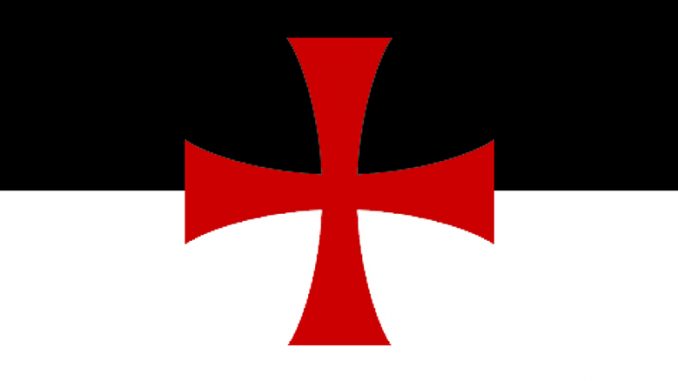
Publisher’s Note: Many of the writings of early Masonic historians took considerable liberties with Templar History, connecting their lineage to the Freemasons. As such, we present this information on the Vexillum Belli as a record of what was considered historic in the past. The reader should take some caution as to the authenticity.
A war-flag. In classical Latin, Vexillum meant a Rag consisting of a piece of cloth fixed on a frame or cross-tree, as contradistinguished from a signum, or standard, which was simply a pole with the image of an eagle, horse, or some other device on the top. Among the pretended relics of the Order of the Temple is one called Me drapeau de guerre, en laine blanche, a quatre raies noires; that is, the standard of war, of white linen, with four black rays; and in the Statutes of the Order, the Vexillum Belli is described as being albo nigroque palatum, or pales of petite anti black, which is the same thing couched in the technical language of heraldry.
This is incorrect. The only war-flag of the ancient Knights Templar was the Beauseant. Addison, on the title-page of his Temple Church, gives what he says is “the war-banner of the Order of the Temple,” and which is, as in the illustration, the Beauseant bearing in the center the blood-red Ternplar Cross. Some of the Masonic Templars, those of Scotland for example, have both a Beaucenifer or Beauseant Bearer, and a Bearer of the Vexillum Belli. The difference in that instance would appear to be that the Beauseant is the plain white and black flag, and the Vexillum Belli is the same flag charged with the red cross.
– Source: Mackey’s Encyclopedia of Freemasonry
About Us
TemplarHistory.com was started in the fall of 1997 by Stephen Dafoe, a Canadian author who has written several books on the Templars and related subjects.
Read more from our Templar History Archives – Templar History

